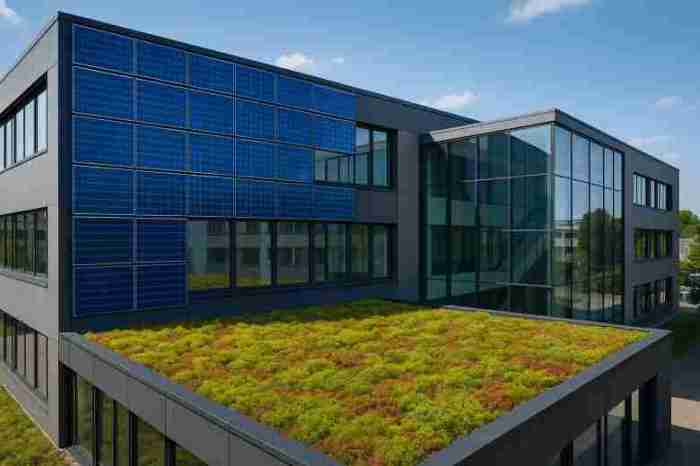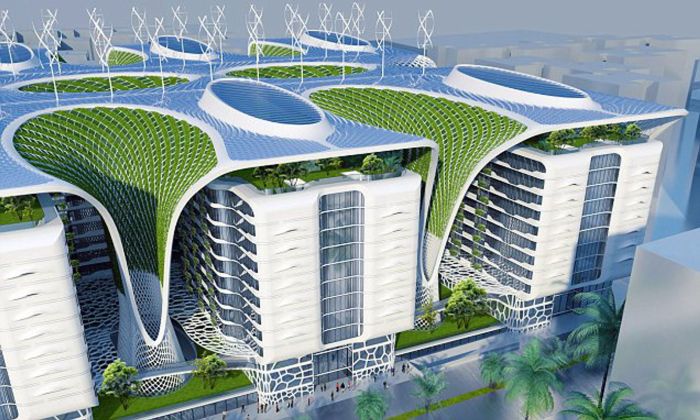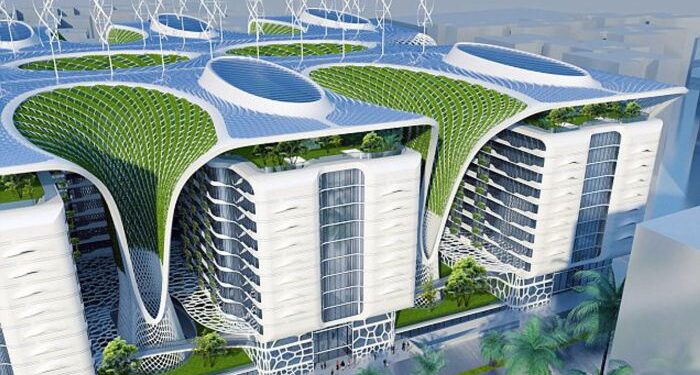Embarking on a journey into the realm of energy-efficient building designs in 2025, we delve into a world where innovation meets sustainability. From cutting-edge materials to state-of-the-art technologies, the landscape of construction is evolving to prioritize eco-conscious practices.
As we explore the key features and sustainable energy systems shaping the future of architecture, the focus shifts towards cost-effectiveness and the long-term benefits of embracing green building solutions. Join us in unraveling the trends that are revolutionizing the construction industry for a greener tomorrow.
Introduction to Energy-Efficient Building Designs in 2025

Energy-efficient building designs refer to construction practices and techniques that aim to reduce energy consumption and promote sustainability by utilizing innovative technologies and materials. These designs focus on optimizing the use of resources while minimizing the environmental impact of buildings.Adopting energy-efficient designs in construction projects is crucial due to their numerous benefits.
Not only do they help reduce energy costs for the occupants, but they also contribute to lower greenhouse gas emissions and promote a healthier indoor environment. Additionally, energy-efficient buildings have a longer lifespan and are more resilient to external factors, making them a wise investment in the long run.The significance of sustainable architecture and green buildings has been steadily increasing over the years.
As the world faces challenges related to climate change and resource depletion, the construction industry plays a critical role in mitigating these issues. Sustainable architecture emphasizes the use of renewable energy sources, efficient water management, and environmentally friendly materials to create buildings that are both eco-friendly and economically viable.
The Role of Technology in Energy-Efficient Building Designs
Technology plays a vital role in shaping the future of energy-efficient building designs. Advancements in smart systems, IoT (Internet of Things), and building automation have enabled buildings to operate more efficiently and intelligently. From energy monitoring and optimization to predictive maintenance, technology is revolutionizing the way buildings are designed, constructed, and managed in 2025.
Key Features of Top Energy-Efficient Building Designs
Innovative materials, advanced technologies, and passive design strategies play crucial roles in the development of energy-efficient buildings.
Innovative Materials
- New insulation materials with higher R-values to reduce heat loss and gain.
- Energy-efficient windows with low-E coatings to minimize heat transfer.
- Sustainable materials like bamboo and recycled steel for structural components.
Advanced Technologies
- Solar panels for generating renewable energy on-site.
- Smart thermostats and building automation systems for efficient HVAC control.
- Heat recovery ventilation systems to capture and reuse heat within the building.
Passive Design Strategies
- Proper building orientation to maximize natural light and minimize heat gain.
- Thermal mass materials like concrete to store and release heat effectively.
- Natural ventilation systems for cooling and air circulation without relying on mechanical systems.
Sustainable Energy Systems and Solutions

Solar panels and wind turbines are increasingly being integrated into building designs to harness renewable energy sources. These systems help reduce reliance on traditional energy grids and lower carbon emissions, making buildings more sustainable in the long run.Energy storage solutions, such as batteries, play a crucial role in efficient energy management within buildings.
They store excess energy generated by solar panels or wind turbines during peak production times for later use, ensuring a continuous and reliable power supply even when renewable sources are not actively generating electricity.
Smart Building Systems for Optimizing Energy Usage
Smart building systems utilize advanced technology to monitor and control energy usage within a building. These systems can adjust lighting, heating, and cooling based on occupancy levels, time of day, and external environmental conditions to optimize energy efficiency.
- Smart sensors and meters collect real-time data on energy consumption, allowing building managers to identify areas for improvement and implement targeted energy-saving strategies.
- Automated controls enable the optimization of energy-intensive systems, such as HVAC and lighting, to operate only when needed, reducing energy waste and lowering utility costs.
- Integration with building management software allows for centralized monitoring and control of energy usage across multiple systems, streamlining operations and maximizing energy efficiency.
Cost-Effectiveness and Long-Term Benefits
Energy-efficient building designs may have higher initial costs compared to traditional construction methods, but the long-term benefits far outweigh the upfront investment. By analyzing the initial costs versus the long-term savings of implementing energy-efficient building designs, it becomes evident that the operational cost savings over time significantly reduce the overall cost of ownership.
These savings are achieved through reduced energy consumption, lower maintenance costs, and increased durability of materials used in sustainable construction.
Government Incentives and Rebates
Government incentives and rebates play a crucial role in promoting the adoption of sustainable construction practices. Various governments around the world offer tax credits, grants, and rebates to encourage builders and property owners to invest in energy-efficient building designs. These incentives help offset the initial costs and make sustainable construction more financially viable.
Additionally, some regions have implemented building codes that require certain energy efficiency standards, further incentivizing the adoption of sustainable practices.
Positive Impact on Property Value and Market Competitiveness
Energy-efficient buildings have a positive impact on property value and market competitiveness. Studies have shown that properties with green certifications or energy-efficient features tend to command higher resale values and attract more potential buyers. Energy-efficient buildings are also more attractive to tenants who are increasingly prioritizing sustainability in their real estate decisions.
Furthermore, energy-efficient buildings can enhance a company's brand image and reputation, leading to a competitive edge in the market.
Final Wrap-Up
In conclusion, the landscape of energy-efficient building designs in 2025 is a tapestry woven with threads of sustainability and innovation. As we witness the shift towards eco-friendly practices and the integration of cutting-edge technologies, the path towards a greener future becomes clearer.
Let us continue to embrace these advancements to create a more sustainable built environment for generations to come.
Expert Answers
Are energy-efficient building designs more expensive to implement initially?
While the initial costs may be slightly higher, the long-term savings in terms of energy efficiency and sustainability outweigh the upfront investment.
How do passive design strategies contribute to energy efficiency in buildings?
Passive design strategies utilize natural elements like sunlight and ventilation to reduce the need for artificial heating and cooling, thus optimizing energy usage.
What are some government incentives available for promoting sustainable construction practices?
Government incentives can include tax credits, grants, and rebates for implementing energy-efficient building designs and sustainable construction methods.




